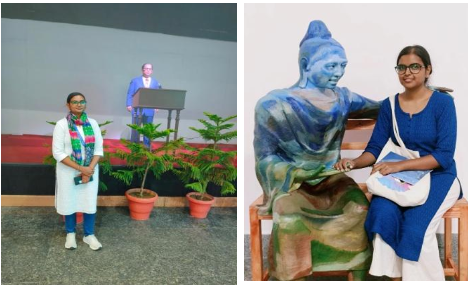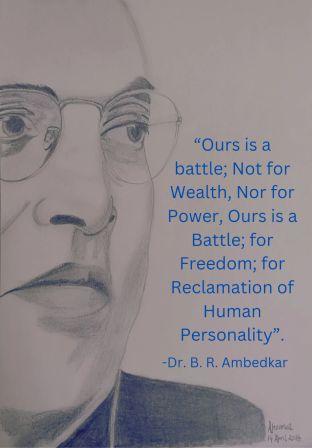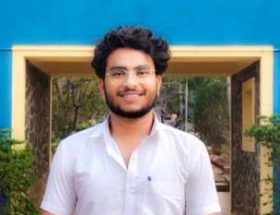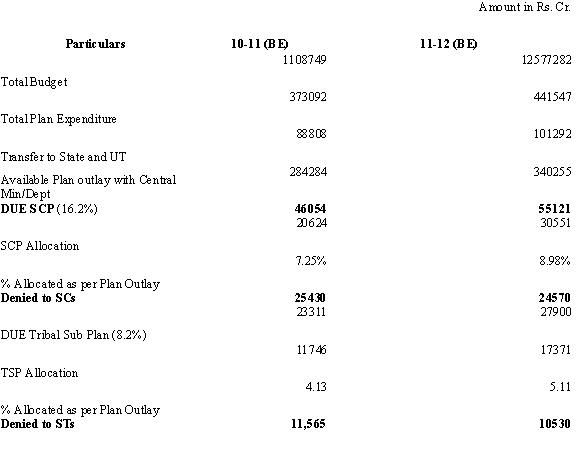Apoorva & Apeksha Singegol D
The heat of reservation policy has just begun to bring the milk to a boil, yet the Supreme Court is already eager to extract the cream that hasn’t even formed yet. The bubbles on the surface of the boiling milk might hint at cream, but in reality, it’s just skimmed milk. So hold on! This skimmed milk represents the marginalized communities, historically skimmed off their potential opportunities and decent livelihoods by caste-ridden structures that limit their advancement.

Apoorva & Apeksha Singegol D
Recently, a seven-judge bench of the Supreme Court of India, led by the Chief Justice, ruled in favor of sub-categorising Scheduled Castes (SCs) and Scheduled Tribes (STs) for reservation purposes. Four of the judges—Justice B. R. Gavai, Justice Pankaj Mithal, Justice Vikram Nath, and Justice Satish Chandra Sharma—supported the introduction of a ‘creamy layer’ system similar to the one used for Other Backward Classes (OBCs), aiming to ensure that the most deserving members of SC/ST communities benefit from reservations. This ruling overturns the 2004 E. V. Chinnaiah versus State of Andhra Pradesh case, which upheld the principle of homogeneity and equality among SCs, ruling out sub-classification.
The Supreme Court’s decision appears divisive and illogical. It raises the question of whether the judiciary is trying to determine who among the oppressed is the ‘most oppressed.’ Scheduled Castes have faced homogenous oppression for centuries for their ascribed status irrespective of their achieved status. Therefore, suggesting economic status as a basis for heterogeneity within SCs seems like a below-average argument, indeed it fails to qualify as an argument. The sub-classification and creamy layer principle lack a solid foundation, as the Supreme Court has not supported its ruling with any data. There is no empirical evidence or caste census data that establishes the forwardness of certain SC/ST members. However, there is a substantial record of exploitation against SC/ST communities that blatantly question even the thought of sub-classification, let alone creamy layer.
India is celebrating Azadi ka Amrit Mahotsav. However, Azadi (freedom) and Amrit (nectar) are the privileges enjoyed by the savarnas in this country. Dalits are colonised by the hegemonic caste structure even after 76 years of Azadi. We live in a country where Dalit Panchayat Pradhans are made to sit on the floor forcefully in ward meetings, where Dalit professors face discrimination in recruitment in so-called elite institutions, where Dalit bureaucrats encounter barriers to promotion beyond certain positions, and the list goes on. Can we think of striking reservations, just because they are economically stable?
The underrepresentation of SCs in societal spheres is proof of the same. As stated by Jitendra Singh in Lok Sabha (2019), at the central secretary level of bureaucracy, out of 89 secretaries, there is just 1 Scheduled Caste Secretary; similar trend can be witnessed at the Additional, Joint Secretary, and Director levels; over 42,000 jobs in union ministries for SC/ST/OBCs were unfilled as reported by The Print; and only 17.49 percent of SCs today are in government jobs. An article in Nature says, 98 percent of faculty at the top 5 IITs are upper caste, and, less than 1% of the faculty in 23 IITs of the country are SC/ST/OBCs. In education, according to the data stated by Subhash Sarkar in Rajya Sabha (2023), across IITs, IIMs, and NIITs, about 8000 SC/ST students dropped out in the last five years, 81% of seats reserved for STs, were found vacant in 2021. From 186 SC students in 2019 to 229 in 2022, the dropout rate has increased. The purpose of reservation was to enhance the representation of SC/ST communities, a goal that remains unmet, as evidenced by the data showing the dire state of these marginalized groups in elite positions and institutions in Indian society. Given these circumstances, how is the concept of “cream” relevant?
The culture of India is older than its reservation law. Reservation is an external unit of culture aiming to uplift the marginalised. Reservation, for a savarna, is not a ‘Savarna culture’ but a ‘Dalit culture’ and is looked down upon. The rootedness of the savarna culture of untouchability has deprived the Dalits of receiving complete benefits of reservation transforming the ‘savarna culture’ and ‘reservation’ into binary opposites where for the survival of the untouchability, reservation has been compromised. The law aims at protecting the rights and dignity of its citizens. But when it remains immaterialised in numbers and spirit, and untouchability persists as a stigma affecting marginalised communities regardless of their qualifications indicates deep-rooted societal prejudices and systemic inequalities where subclassification does not hold.
Another question is- Can a state choose the ‘Most Oppressed’ within the ‘Oppressed’? There is a futile attempt to focus on the oppressed sections of the society. Sub-classification and the creamy-layer principle are attempts to showcase a so-called shift of the strategy focusing on the ‘most oppressed’ within the oppressed. This does not need much effort on the part of the government as it is easier to feed the demand and the conscience of the dominant. The true challenge arises when one has to question the dominant for the upliftment of the oppressed. About 5 percent of the Indian population comprises Brahmins, yet they dominate the most power positions. Why not impose an upper limit on the over-representation of upper castes in these positions, creating opportunities for the oppressed?
Additionally, the challenge is to identify the lack of socio-economic development among certain sub-castes in SCs and the reasons for the same. Due to a lack of capabilities induced by inadequate education and employment, in certain sub-castes, we see an underrepresentation. Hence, steps must be taken to increase the capabilities of these castes by providing accessible and affordable education and employment opportunities alongside the reservation. Skimming of the perceived creamy layer would not benefit the targeted (as said by the Supreme Court) when the socio-economic lives of certain individuals are not reaching the doorstep of accessing reservations.
Subclassification leads to a never-ending process of creation of the ‘most oppressed’ amongst the ‘oppressed’ or ‘the privileged’ as stated by Gopal Guru and the continual reproduction of demands from the most oppressed renders the entire policy of subclassification futile. This is also a systematic attempt to sow the seeds of divide within the Dalits hindering their collective political mobility aided by educational and economic empowerment.
The Supreme Court is now looking at caste from a class lens, disregarding the caste-based foundation on which reservation was formulated. The untouchability and exploitation experienced by the Dalits have been the root cause of their stigmatised social status which is overlooked by the Supreme Court.
It took us centuries to enact a law abolishing Untouchability (Article 17), a provision likely owed to Babasaheb. However, within a mere 76 years, dominant groups are eager to subclassify SCs, aiming to deprive them of compensatory justice crucial for their social, educational, and economic advancement. Sub-classification can never be a solution to uplift the most oppressed. Instead, the groundwork should be done to eradicate discrimination and successful implementation of the existing laws.
Reservation is an affirmative action that is social in spirit. Sub-classification and the creamy-layer principle undermine the socialness of the reservation. Regardless of achievements, being and surviving as a Dalit is still a challenge in the savarna-dominated Indian society. However, Dalits are fighting for their rights every day. Like Babasaheb said, “Ours is a battle; Not for Wealth, Nor for Power, Ours is a Battle; for Freedom; for Reclamation of Human Personality”. SC/STs are still on the battlefield aiming at reclamation. In this context, the quest of the Supreme Court to subclassify and extract a creamy layer out of the SC/STs stands as a flimsy and distorting affair.
~~~
Apeksha Singegol, Research Scholar, Centre for Research, CHRIST (Deemed to be University), Bangalore. She works in the areas of Caste and Dalit issues, the Sociology of Media and Popular Culture.
Apoorva Dasharath Singegol, Research Scholar, Centre for African Studies, Jawaharlal Nehru University, New Delhi. She works in the areas of Caste, Education, and Diaspora.









